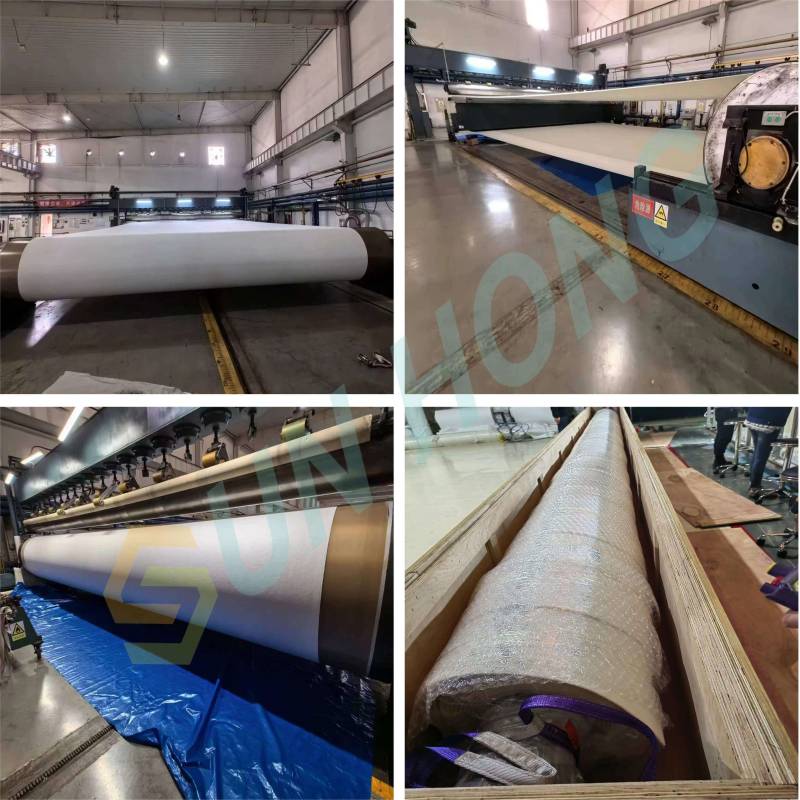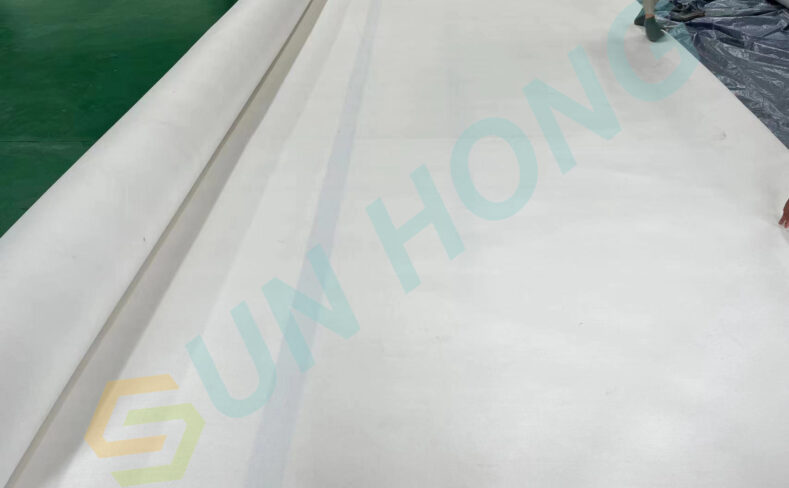
The role of paper making press felts is crucial in the process of paper production. Whether it is in the selection and design of press felts, or in their use and maintenance, it is necessary to fully understand the performance of press felt, the problems that may arise during their use, and the corresponding solutions in order to ensure the normal efficiency of the paper machine and meet the demand for high-quality paper production.
Paper sheet crushing refers to the formation of fluid pressure when wet paper sheets are subjected to pressure in the press section. Under the action of fluid pressure, the water in the paper sheets is discharged outward. If the drainage is not smooth, it will disrupt the arrangement of fibers in the wet paper sheets. This phenomenon is called “paper sheet crushing” and it is the most common and troublesome paper disease.
Improper selection of paper press felt leads to paper crushing:
The choice of press felts must be based on the various technical parameters of the paper machine and the production environment to select the brand, weight, air permeability, thickness, and origin of the paper press felts. It is best to communicate and cooperate with the technical personnel of the press felt manufacturer to avoid detours.
(2) Paper crushing caused by dirty paper press felts:
Strengthening the washing of paper press felts and maintaining their cleanliness is crucial to prolonging their service life and reducing the occurrence of paper diseases.
(3) Paper crushing caused by worn-out paper press felts:
The wear of paper press felts can be divided into uniform wear and local wear.
(4) The reasons for press felt wear include: new replacement of vacuum box panels, insufficient needle punching tightness, light shaping, excessive vacuum degree, lack of lubricating water between the press felt and the vacuum panel, improper selection of vacuum panel materials, excessive friction coefficient, and late-stage use of the press felt. Measures should be taken to address these different reasons.
(5) Paper crushing caused by poor operation of the press felt:
The operating status of the paper press felt mainly includes the tension state, lateral shrinkage state, straightness of the standard line, and smoothness of the surface. Insufficient press felt tension, excessive lateral shrinkage, air leakage in the vacuum suction box, deformation of the standard line, and uneven tension of the press felt bottom cloth can easily cause uneven dehydration of the wet paper and lead to crushing.
Blast refers to when air is brought into paper or press felt, it will form bubbles between the paper and the felt, causing delamination and blistering between local layers of paper or wet paper sheets. This usually occurs on the cylinder of a multi-cylinder paper machine, at the entrance of the press nip, and in the dryer section.

Causes and Measures to Prevent Bubbling:
The presence of a large amount of air in the pores of a new press felt, along with factors such as initial surface roughness, excessive air permeability, insufficient vacuum level, and high water content in the press felt, can easily lead to the formation of bubbles between the paper and the press felt in the nip area.
In the production of cardboard, the inconsistency in the beating degree of each layer of pulp results in variations in interlayer bonding.
Improper adjustment of the nip line pressure; improper control of the starch flow rate on each wire, the level of stock on the wire, and the difference in water level inside and outside the wire; excessively low vacuum level in the vacuum suction box, leading to variations in moisture content between the layers of pulp, thus causing bubbling in the wet paper.
Contamination in the wire section and localized dirt on the press felt, resulting in poor local dewatering and low air permeability; localized blockage of the nip roll water scraper, uneven or damaged water-blocking fabric, leading to rewetting of the water being squeezed out.
Incorrect angle of entry for the wet paper before pressing, and incorrect adjustment of the eccentricity and line pressure of each pressing zone.
Poor adjustment of the drying temperature curve in the drying cylinder, and so on.
Blast (paper bubble):
It refers to the phenomenon that the air brought in by the pulp or felt accumulates locally between the felt and the paper to form bubbles, and the paper or wet paper layer is broken and local delamination bubbles are generated between the layers. This situation usually occurs on the mesh cage of the multi-circular paper machine, at the entrance of the pressing zone and the drying section.

Causes and Solutions for Bubble Formation:
The presence of a large amount of air in the pores of a new press felt, combined with factors such as the initial uneven surface, excessive air permeability, inadequate vacuum level, and high moisture content, makes it easy for bubbles to form at the entrance of the press zone between the paper and the press felt, which cannot meet the requirements of normal production.
During the production of cardboard, the inconsistency in the beating degree of each layer of pulp leads to differences in interlayer bonding.
Improper adjustment of the pressure of the couch roller line; improper control of the amount of pulp applied to each wire, the level of pulp on the wire, and the difference in water level inside and outside the wire; excessively low vacuum level in the vacuum suction box, resulting in varying moisture content between the wet paper layers, thus causing bubbles in the wet paper.
Dirt on the wire section and press felt, resulting in poor local dewatering and air permeability; local blockage of the couch roller water scraper, uneven or damaged water-blocking cloth, causing the pressed water to reabsorb.
Incorrect angle of entry for the wet paper, incorrect adjustment of the eccentricity and line pressure for each nip, and poorly adjusted temperature curve for the dryer cylinder, etc.
The imprints on the paper caused by the press felt actually consist of two types of marks: one is caused by the base fabric of the press felt, known as “press felt base fabric marks,” and the other is rough marks on the paper surface due to the press felt’s roughness, heavy needle marks, and coarse fibers, known as “press felt fiber marks.”
The main reasons for the occurrence of press felt base fabric marks are as follows:
(1) Improper selection of the base fabric (bottom net) structure of the paper making press felt.
(2) Unreasonable proportion of the structure of the paper making press felt, especially the insufficient coverage of the fiber layer on the front side of the press felt.
(3) Insufficient tension of the warp and insufficient beating force during the weaving of the bottom net, resulting in insufficient flatness of the woven bottom net.
(4) Poor initial shaping effect of the bottom net.
The main reasons for the appearance of fur marks on the press felt are as follows:
(1) The surface layer of fibers on the working side of the paper making press felt that comes into contact with the paper is too coarse.
(2) The heavy needle marks and uneven needle holes on the working side of the press felt are caused by poor needle quality, improper use of needles, unreasonable needle board fabric needles, and unreasonable needle punching process.
(3) The wool web is uneven during the combing process, resulting in uneven “cloud-like patterns”.
(4) The traditional far-infrared shaping equipment is still used for the shaping of the press felt. During the shaping process, the high temperature radiation is used to melt the fibers (fiber bundles) on the surface of the press felt into gelatinous particles. These particles are very hard, which leads to the press felt not being pressed (smoothed) for a long time during use.

